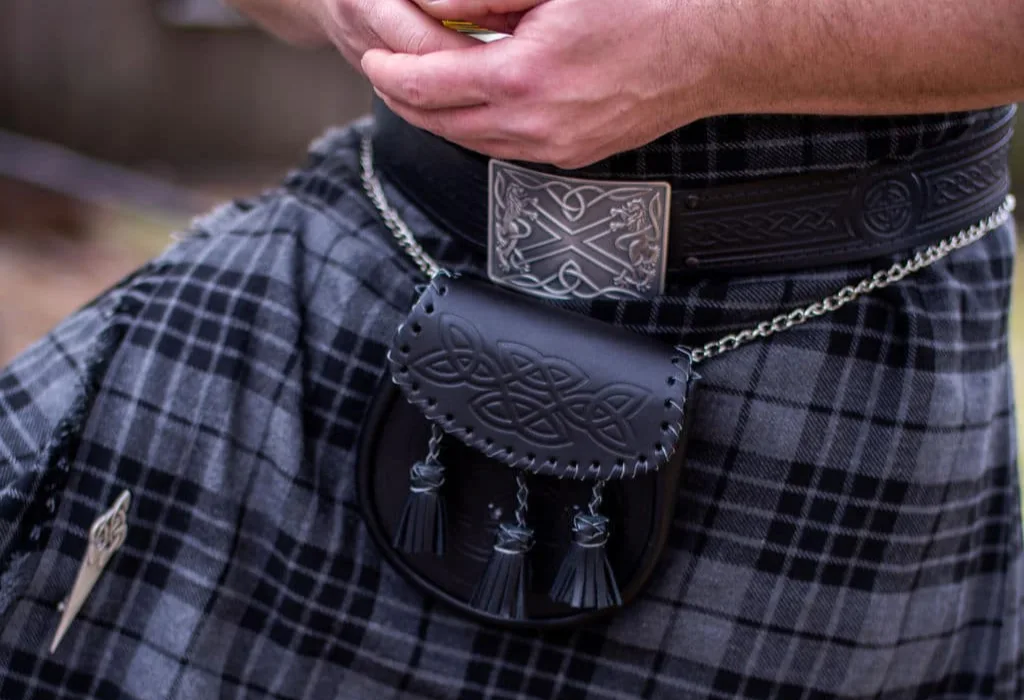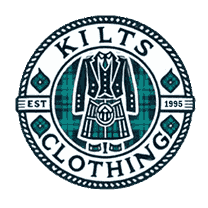How to wear the belt and buckle

Kilt belts are an essential part of traditional Scottish attire, adding function and style to the outfit. Whether you don a kilt for a special occasion, a Highland game, or simply because you appreciate the look, the right kilt belt can make all the difference. This guide provides comprehensive information on choosing, wearing, and maintaining the perfect belt for your kilt.
A kilt belt is a wide belt, typically made of leather, designed specifically to be worn with a kilt. Unlike regular belts, these are much broader and often come with ornate buckles.
Historically, kilt belts have been a part of Scottish Highland dress, serving practical and decorative purposes. They help keep the kilt securely in place while adding an element of style and tradition. A leather belt is favored for its durability and classic look, often adorned with intricate designs and sturdy buckles.
How to Wear a Kilt Belt
Wearing a kilt belt ensures comfort and style, enhancing the traditional Scottish attire. Follow these step-by-step instructions to wear your belt properly:
Prepare Your Kilt
Ensure your kilt is worn correctly, sitting at your natural waist, just above the navel. The pleats should be at the back, and the flat aprons should overlap at the front. This setup is crucial for the proper positioning of your belt.
Position the Kilt Belt
Locate the belt loops on your kilt. These are typically positioned at the sides and the back. Thread the belt through these loops, starting from the left side and working your way around to the front. This ensures that the belt sits evenly around your waist.
Adjust the Belt
Pull the belt through the loops until both ends meet at the front. Make sure the belt is flat and not twisted. It should sit comfortably on your waist without pinching or sagging. Proper adjustment is essential for maintaining the kilt's shape and comfort.
Fasten the Buckle
Align the buckle with the center front of your kilt, where the two aprons overlap. Insert the buckle's prong into the appropriate hole on the belt, ensuring it is secure but not too tight. The buckle should lie flat against your body and sit comfortably at your waist.
Check the Fit
Ensure the belt is snug but comfortable, providing support without restricting movement. Choose a different hole to adjust tension if necessary. The fit is crucial for both functionality and appearance.
Final Adjustments
Ensure the buckle is centered and the belt is even all around. Tuck any excess length neatly into the loops or under the belt. Proper adjustments will ensure the belt stays in place and looks neat.
Completing the Look
Add accessories like a sporran over the front of the belt. Ensure all outfit elements are aligned and adjusted properly for a polished look. Accessories like sporrans complement the belt and complete the traditional Scottish attire.
Types of Kilt Belts
There are several types of belts to consider, each with unique characteristics:
- Leather Kilt Belts: Durable and classic, often with intricate designs and sturdy buckles.
- Traditional Kilt Belts: Adhere to historical designs for authenticity.
- Custom Kilt Belts: Personalized to fit preferences, featuring unique designs, materials, and buckles.
- Adjustable Kilt Belts: Offer adjustability for a perfect fit.
- Heavy-Duty Kilt Belts: Built to withstand more wear and tear for active events.
Choosing the Right Kilt Belt
When selecting a belt, consider material, size, and style. Leather is a popular choice for its durability and aesthetic appeal. Ensure the belt is wide enough to fit through the loops of your kilt, typically around 2.25 to 2.5 inches. Style-wise, choose a belt that complements your kilt and other accessories. For the best fit, measure around your waist where the kilt will sit and select a size accordingly.
Kilt Belt Buckles
The buckle is a significant part of a belt, adding functionality and decoration. Buckles come in various designs, from simple to highly ornate. Popular themes include Celtic knots, thistles, and clan crests.
Customizing your buckle allows for personal expression and can add a unique touch to your outfit. A well-chosen buckle can enhance the overall look of your belt.
Maintaining Your Kilt Belt
Regular maintenance is essential to keeping your belt in top condition. Clean the belt with a damp cloth and mild soap, avoiding harsh chemicals that can damage the leather.
Store the belt in a cool, dry place, ideally hanging to prevent creases. Regularly check the buckle for signs of wear and make necessary repairs to ensure longevity. Proper maintenance will extend the life of your belt and keep it looking its best.
Accessories for Kilt Belts
Enhance your kilt outfit with additional accessories. Sporrans, worn at the front of the kilt, are traditional pouches that complement the belt. Belt pouches can also be added for practicality and style. Other accessories, such as kilt pins and sgian-dubhs (small knives), can further elevate your ensemble, adding to your belt's traditional and stylish look.
Conclusion
Choosing the right belt involves considering factors like material, size, and style to ensure a perfect fit and look. Following this guide, you can confidently select, wear, and maintain a belt that enhances your traditional Scottish attire.
Embrace the heritage and style of wearing a kilt belt, and enjoy the unique flair it adds to your outfit. Whether it's a leather, traditional, or custom belt, the right choice will enhance your overall appearance and keep your kilt securely in place.
FAQs
Yes, it is perfectly OK to wear a belt with a kilt. A kilt belt adds both style and functionality, helping to keep the kilt securely in place.
The kilt belt goes around your waist, threaded through the belt loops on the kilt, and fastened at the front center where the kilt aprons overlap.
Yes, a kilt belt goes through the belt loops on the kilt, which are typically positioned at the sides and back, helping to secure the kilt in place.


